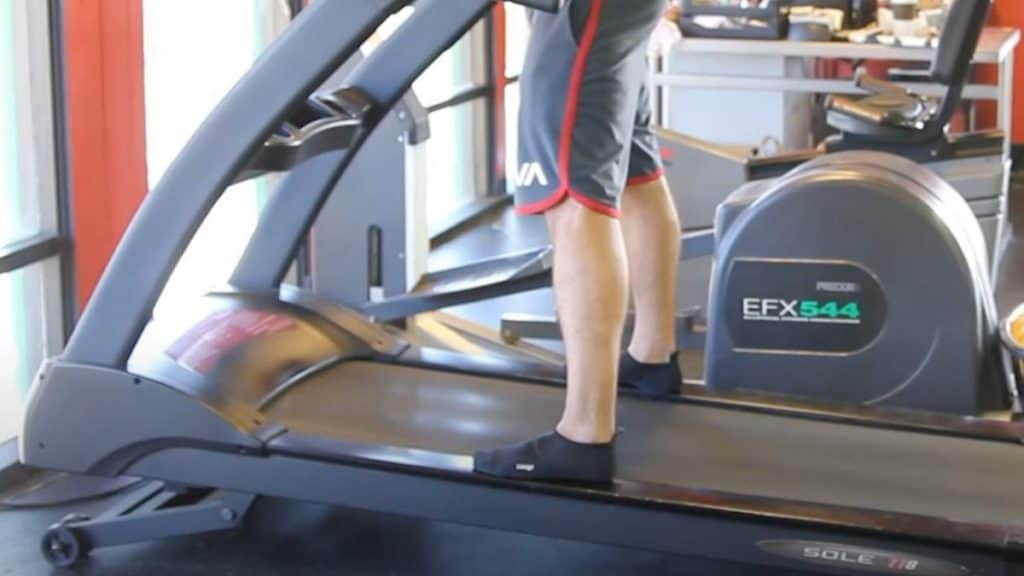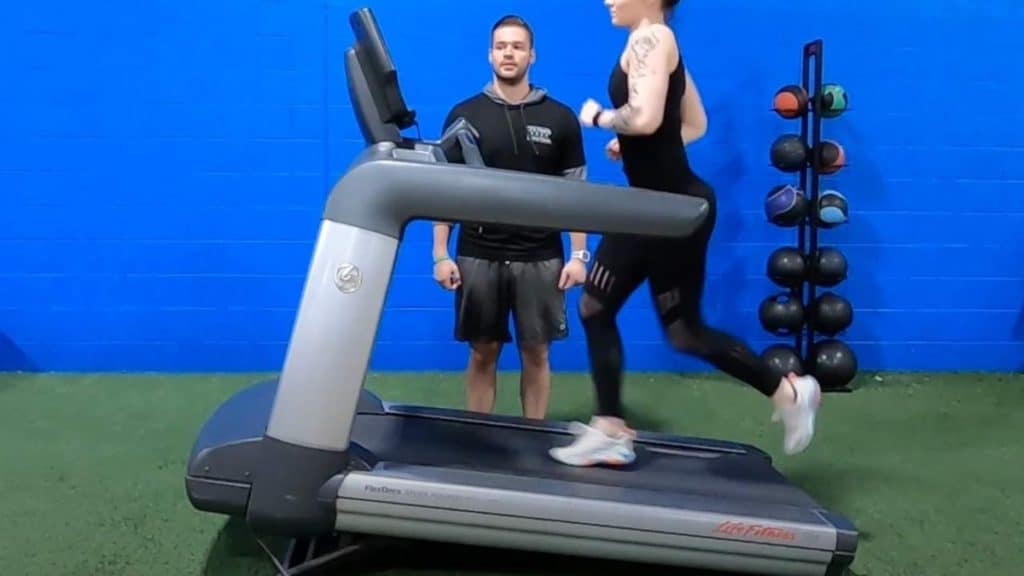
Running on a treadmill is a great way to get in shape, but you could be doing more harm than good if you’re not careful. Many people make the mistake of running on a flat treadmill, which can lead to joint pain and other injuries. To avoid these issues and get the most out of your treadmill running workouts add some incline.
Incline treadmill running can prevent joint pain and other injuries by adding more resistance to your workout. When you run on an incline, your muscles have to work harder to push against the increased resistance, which can help to tone your body and improve your cardiovascular health. Additionally, incline treadmill running can help burn more calories, making it effective to lose weight or maintain your current weight.
If you’re looking to get the most out of your incline treadmill running workouts, keep a few things in mind:
- It’s essential to start slowly and gradually increase the incline as you go. Most beginners begin between 1-3%incline.
- It’s best to run at a moderate pace rather than trying to sprint up the incline. A good speed is around 5-6mph (8-9.6kph).
- Be sure to warm up before and cool down after your workout to avoid injury. An appropriate warm-up time is around 5 minutes.
Treadmills are by far one of the most accessible and popular pieces of equipment for those who enjoy cardio in their workout regimens. Knowing how best to utilise the features and settings on a treadmill ensures you maximise your workout.
For instance, treadmills allow you to adjust the incline to make your workout more of a challenge. Inclines can be a fantastic element of doing your exercise to help you lose or manage your weight, but they can help you build your endurance and overall body health. (Here’s 7 ways to lose 10 pounds in a month on a treadmill).

Table of Contents
What Incline Should I Run On A Treadmill?
A treadmill needs to be set at 1-2% incline to simulate outdoor running. Increase your treadmill to 3-5% incline at a moderate pace around 5mph (8kph) for weight loss and fitness. For advanced runners, a treadmill incline for 6-12% is ideal for cardiovascular fitness.
The incline percentage you choose will depend on your current fitness level. If you are getting back into working out, don’t add an incline until you start to build up your endurance. When you feel more comfortable running on your treadmill, increase your incline to 1% and 2%. If you find it too challenging, go down until you feel like you can handle more.
You can slowly increase how high your incline goes as you get used to using inclines. Inclines can be of great benefit for a variety of reasons. They can make your workout more exciting and dynamic, so you don’t become bored of your treadmill and stop using it. They also provide a safe way to power up your workouts.
Inclines can mimic how you would walk or run up a hill, but they don’t stress out your muscles or joints. When running up a hill, you can put a lot of stress onto your joints and muscles, leading to injury. Of course, they also offer more potential to push yourself positively towards building strength, agility, endurance, and health.
What Incline Should You Run On A Treadmill To Lose Weight?
On average, a 3-5% treadmill incline is ideal for weight loss and cardiovascular conditioning. The treadmill speed should be set around 5mph (8kph), and you can expect to burn around 500 calories for 30 minutes of incline treadmill running.
There is not just one incline level that will guarantee your weight loss. Instead, the best way to maximise your treadmill workout with inclines to lose weight is to implement intervals. Intervals can consist of a combination of increased and decreased incline levels and varying speeds.
In interval training, you will typically go full force for a couple of minutes, and then you’ll slow down your workout for a few minutes. The process then repeats until you have completed your workout. Interval training has been scientifically proven to be one of the best ways to exercise to achieve the best results, both outwardly and inwardly. Read this post for a complete look at how much weight you will lose running on an incline treadmill.

How Do Inclines Help You Lose Weight Faster?
Playing with the intensity of your workouts is one of the most effective ways to lose weight. The more intense your workout is, the more calories you burn. Moreover, inclines to help you build strength in your muscles, and having muscle helps you burn calories more efficiently.
Inclines require you to exert more energy and effort to continue your workout, whether walking or running. Thus, you support improving your cardiovascular and respiratory systems, which are both key components to health and weight loss.
Walking and running on an incline increases the number of calories you burn by around 30%. For instance, a person that weighs 80kg and runs for 5km at a time of 30minutes will burn 442 calories on a flat treadmill. The same runner can burn 568 calories for the same workout by increasing the incline to 5%. Is 30 minutes of incline treadmill enough? Read this post.
🔳 Incline treadmill running can help burn more calories than running on a regular treadmill. In fact, a study conducted by the American Council on Exercise found that incline treadmill running can help you burn up to 30% more calories than running on a flat surface.
🔳 Incline treadmill running can help tone your body. When you run on an incline, your muscles have to work harder to push against the increased resistance. This can help to tone your legs, arms, and core, making it an effective way to get in shape.
🔳 Incline treadmill running can improve your cardiovascular health. Incline treadmill running can help increase your heart rate and breathing, improving your overall cardiovascular health. Incline treadmill running can help you breathe better. When you run on an incline, your body has to work harder to pump oxygenated blood to your muscles. This can help to improve your lung capacity and make it easier for you to breathe.
🔳 Incline treadmill running is an effective way to get in shape. Incline treadmill running can help to burn more calories, tone your body, and improve your cardiovascular health. If you’re looking to get the most out of your treadmill running workouts, be sure to add in some incline time!
🔳 Additionally, incline treadmill running can help to reduce your risk of heart disease and stroke. In fact, a study conducted by the American Heart Association found that incline treadmill running can help to reduce your risk of heart disease and stroke by up to 50%.

Is It Better To Run On A Treadmill With Incline?
Utilising the incline feature on your treadmill can also help you change your treadmill routine. This helps reduce the chances of you getting bored with your treadmill. Furthermore, changing the incline levels throughout your treadmill experience can help consistently challenge your body.
When your body gets used to a workout, the workout will have less impact on how it affects your body. This could mean several things, including reducing how many calories you burn, how your positive hormone levels increase, and how it contributes to building muscle and burning fat.
Incline will also help engage your entire body, which doesn’t often happen during a treadmill workout. Any method that can utilise more of your body will have the best overall impact on your health and weight goals when it comes to cardio. More calories get burnt, and more muscles get built.
Is 4-6% Incline On A Treadmill Enough?
A 4-6% incline is probably the highest incline you should attempt, especially when running. While you might want to push yourself, an incline that is too high could put too much pressure on your joints, your hips, and your back. Too much pressure could result in an injury.
If you are looking to make your workout more of an obstacle, you can do so safely with interval training. You can also increase the speed at which you run on a lesser incline. Be sure that you build up your endurance steadily, as you can injure yourself when you push yourself too far.
When appropriately used, inclines can actually help build the muscles that keep your joints protected. Inclines don’t cause your joints and muscles to strain when they are used correctly. Inclines also help you to stretch your muscles while activating them at a level that your body can handle much better than running up a hill.
Even small inclines will increase the intensity and efficacy of your workout much more than you might initially feel. You don’t want to push yourself to the point where you are struggling to breathe and keep up with the treadmill. This could lead to you burning yourself out, and if you’re not enjoying your workout, there’s a good chance you won’t stay consistent with your efforts.
Final Thoughts
Regardless of how you implement inclines into your treadmill routine, you should not overexert yourself or push your body too far. Be sure to warm up properly to increase your heart rate safely and cool down before getting off the treadmill. You should also wear proper shoes with good grip to avoid slipping.
With all these safety tools and a good understanding of incline, you can increase the benefits of running on a treadmill for your overall health and wellness. An incline does not have to be dramatic to be effective. What’s most important during any workout is consistency, safety, and enjoyment. When you love your workout, you’ll be motivated to keep going.



